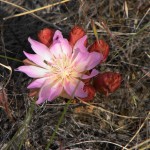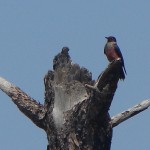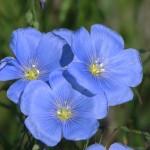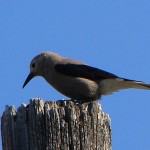As I begin to accumulate knowledge about the South Okanagan, it is astounding to find out how many plants and animals were identified and named for the explorer’s Meriwether Lewis and William Clark. The expedition was ordered by the president of the United States, Thomas Jefferson, to explore the newly acquired Louisiana Purchase and took place between 1804 and 1806. There were several goals both scientific and commercial – to study the area’s plants, animal life, and geography, and to discover how the region could be exploited economically.
They were not the first explorers to cross the continent, Alexander MacKenzie, an employee of the Northwest Fur Trading Company (based in Montreal, Quebec) went overland to the Pacific in 1793. MacKenzie’s mandate was to expand the commercial interests of the fur trading industry and make strategic alliances with the First Nations peoples.
It would not be accurate to say that Lewis and Clark discovered these plants and animals as the indigenous peoples had known of them. However, they were the first Euro-Americans to document their findings and publish their results.
One of my favorite members of the Family Picidae is the Lewis’s Woodpecker (melanerpes lewis). In Canada, this bird is found only in Southern British Columbia and is considered to be of special concern or vulnerable. Habitat where you are most likely to find The Lewis’s Woodpecker is open Ponderosa pine forests and old cottonwood stands. They usually choose a dead or burnt out stag to make their nest cavity. For the past several summers I have been conducting a survey for the Wildlife Tree Stewardship program where I spend time in the field finding and mapping nest sites. One of my duties is to determine if the Lewis Woodpecker returns to the same nest site each year. In most cases during the 2012 season I was unable to reach that conclusion; in my area of study only 1 previously marked tree had a returning woodpecker and 7 new nest sites were found. Unlike most other woodpeckers the Lewis catches insects in flight and can often be seen “Hawking”.
The South Okanagan is home to 700 species of wildflowers, one that stands out for me is the lovely Wild Blue Flax (linum perenne lewisii) named for the explorer Meriwether Lewis. Like many species of flowers the blooming period is very short, the best time to see the Wild Blue Flax is mid-June. It is found at low to mid elevation throughout dry climates in dry grasslands, sagebrush steppes and open ponderosa pine forests. There are many uses for this plant that have been known about for centuries, both medicinally and as a food source. Some First Nation’s peoples used the plant for the production of linen thread and in a poultice to treat ulcers. The nutritional value of flaxseed oil is outstanding as it is the highest single source of omega-3 fatty acid. Seeds are ground up and made into linseed oil a drying agent used in paints and varnishes. Indeed this plant is very versatile and ranks high in importance throughout the world.
An odd thing was happening in February 2013, I have been seeing a large flock of up to 11 Clark’s Nutcracker Jays (nucifraga columbiana) almost daily. Normally at this time of year I see a pair of these Jays who maybe in the early stages of mating. Perhaps we will experience anirruption or a dramatic, irregular migration of large numbers of birds to area.As a member of the Family Corvidae, the Clark’s Nutcracker Jay is very intelligent, and has incredible spatial memory, enabling it to find in winter most of the tens of thousands of seeds cached in the summer. Unlike the Lewis’s Woodpecker, this Jay residents here year round and is common in high coniferous forests.
At Great Horned Owl Eco Tours, a key element in delivering effective and experiential tours, is the ability to demonstrate how animals, flowers and fauna are integral pieces to a sustainable, healthy and productive environment.






